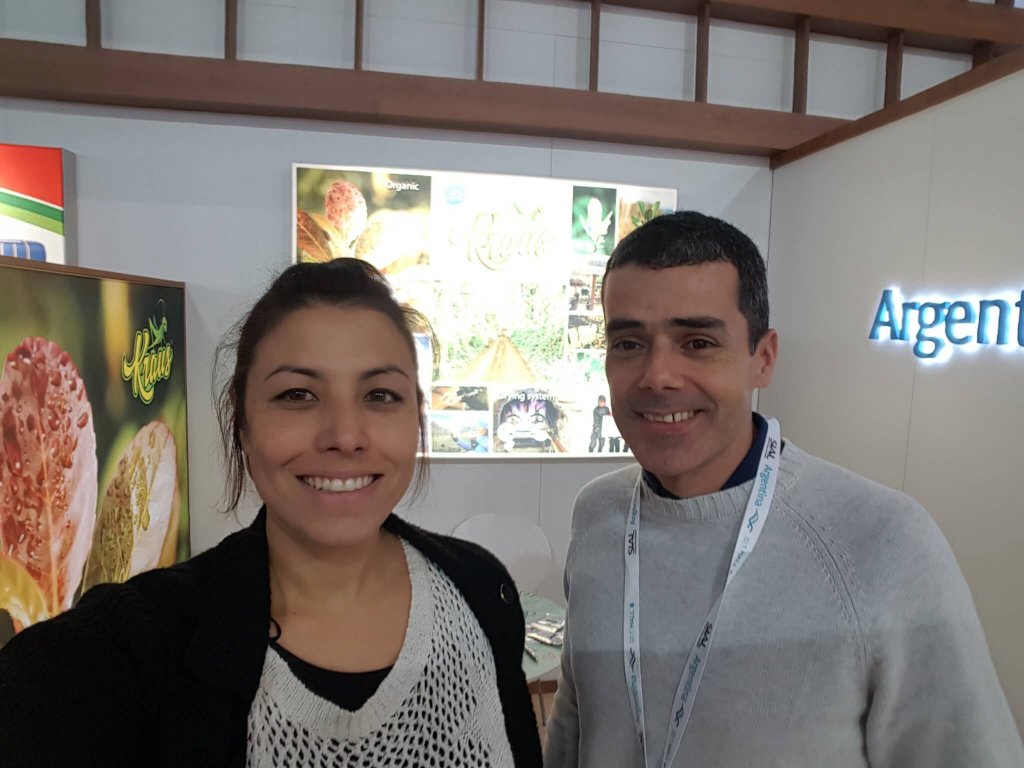Yerba Mate Article
Yerba Mate News Round-Up: October 2016
Welcome to the UruShop yerba mate news round-up for October 2016. My apologies for this being slightly later than usual, but last week I was welcoming my daughter into the world, mate in hand of course!
SIAL 2016 Recap:
October saw the annual SIAL food and drink fair in Paris, one of the largest and most important food exhibitions in the world. This year the event featured an exhibition by Argentine yerba mate producers on behalf of the National Institute of Yerba Mate (INYM). The main aim of the showcase was to boost yerba mate’s profile in international markets, a sector that has shown significant growth in recent years, unlike the stagnating domestic market.
The central message of the exhibition was threefold: Firstly, that yerba mate is a product with an entirely natural production process; secondly, that it is a drink with outstanding nutritional properties; and finally, that it is extremely versatile, can be taken hot or cold, and is great mixed with a variety of different herbs and juices.
UruShop’s co-founder Emma visited the exhibition and caught up with Milton Kraus, owner of Kraus organic yerba mate, with whom we work closely, and who featured in our blog last month. Emma also had a chance to speak with representatives from Amanda, Rosamonte, CBSé, as well as Las Marias (producers of La Merced, Taragui and Union Suave) and the Paraguayan Commerce Department, who facilitate the export of brands such as Selecta, Kurupi, and La Rubia.

As well as the gigantic mountains of bread, cheese, and cakes, a BBQ was put on at lunchtime in true Argentine style!
Source: Misiones Online – SIAL 2016
Summit on Modernisation:
A summit focusing on the modernisation and diversification of the yerba mate industry has taken place in the Brazilian city of Curitiba, and was attended by all three major yerba producing countries. Attendees looked at the current state of mate in domestic markets, with one panel discussing the possibilities for growing the popularity of mate outside of South America, paying particular attention to India.
Roberto Ferron, executive director of the Brazilian Yerba Mate Institute (IBRAMATE), stated that whereas there is an under-consumption of mate in Brazil as a whole – 145 million Brazilians do not currently consume the product – exports to foreign markets are “stable”, with Uruguay being the main buyer.
In regards to production methods in Paraguay, Victor Masloff of the Paraguayan Yerba Mate Centre said that Paraguay have always kept production methods very traditional, and believe strongly in preserving the fertility of the soil through minimal use of pesticides. Paraguay has also recently seen an increase in the number of farmers planting yerba trees underneath the rain forest canopy in order to prevent further deforestation.
INYM representative Esteben Fridlmeier observed that numerous changes have occurred in the Argentine mate industry during the past decade, with the introduction of numerous quality control measures which seek to guarantee an uncontaminated finished product.
Source: 6 Digital – Yerba Mate Modernisation and Diversification
Largest Yerba Mate Harvest of the Last 4 Years:
It’s looking likely that Argentina will produce its largest yerba mate harvest of the last four years, with over 802 million kilograms having already entered the drying process. 810 million kilograms were harvested in 2015, and at current pace 2016 is set to overtake it before the end of the year. A drastic reduction in exports to Syria could mean the large harvest leads to overstocks, which would be bad news for producers. Demands have therefore been made for the government to step in to help alleviate the situation.
Sources:
6 Digital – Greatest Volume in the Last Four Years
Misiones Online – Producers Demand Measures to Avoid Oversupply
New Study into Yerba Mate and Influenza in Japan:
A young scientist is set to embark on a new study looking at the impact of yerba mate on the influenza A virus. Ana Paula Butiuk, PhD in Chemical Engineering, will travel to Japan to continue her research which she began during her PhD thesis. She will be working with Dr Osao Adachi of Yamaguchi University, one of the most renowned researchers in the field. She hopes to return to the National University of Misiones upon completion of her work, in order to strengthen scientific knowledge of mate in the region.
Source: Misiones Online – Yerba Mate and Influenza A
CBSé Launch Campaign on Yerba Mate and Compost:
Major Argentine yerba mate producer CBSe have launched a new campaign to highlight the highly compostable nature of the plant.
“In Argentina we take so much mate and we throw a residue that is still nutritious,” said yerba caterer Josefina Armendares. “Even when it has no flavor, it still contains vitamins, amino acids, and minerals that can be very useful for making a very rich compost for the soil.”
Armendares explains that yerba compost can even be made in the urban home; in a pot on a balcony, or in a tupperware on the kitchen counter.
Source: UNO – Yerba Mate and Compost
And Finally…
Not that this will come as much of a surprise to those of us that drink it regularly, but a new scientific study has shown that drinking mate makes us happy! Not only does mate contain happiness boosting compounds such as serotonin, vitamin B1, and theobromine found in chocolate, but the act of taking mate in the company of friends is the perfect compliment to happiness. Experts have also stressed the importance of exercise and eating a balanced diet, but if happiness is something that is currently in short supply, drinking yerba mate can be a great start in regaining some!
Source: UNO – Taking Mate Makes People Happy
Spotted a story you think should be in our November bulletin? Please let me know jack@urushop.co.uk



